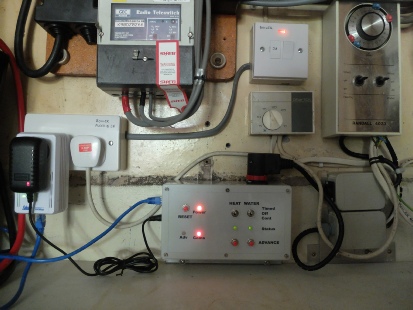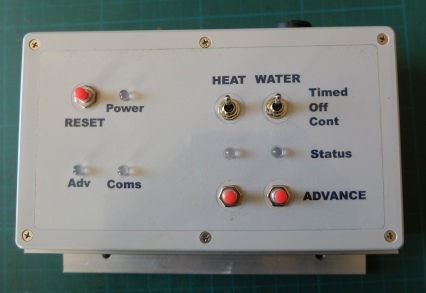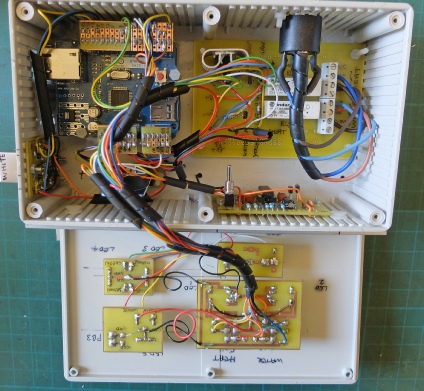 Home
Home


The controls on the unit itself include a reset button and programme advance buttons for heating and water. There are also four status LEDs.
Additionally, I wanted to be able to over-
Being a very cautious person, I have retained the old mechanical timer and utilising a plug and socket arrangement I can switch back to the original timer in an instant and work on the electronics if required.
I’ve included a video and an update which, I hope, shows what this project is all about.



Central heating controller
Old timer
New timer


Introduction
Next, is the circuit…
Latest video
Original video

This is a back to basics (sort of) Arduino-
The output of my controller is essentially two switches, one to control the heating of radiators in the rooms, the other to control the heating of the hot water supply. The switches are two mains-
I have updated this article on my new site: www.newmrr.co.uk